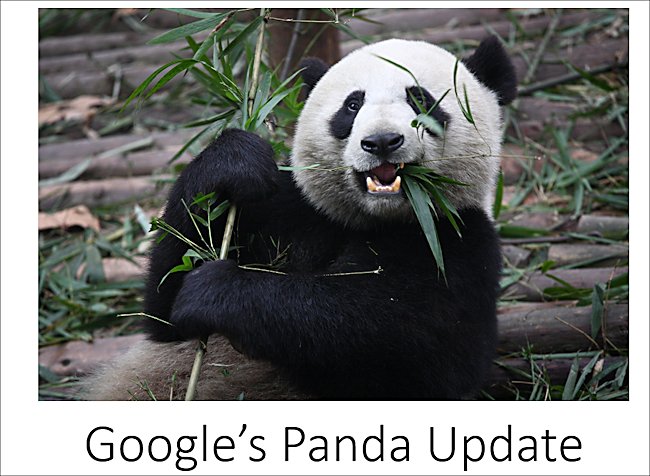The Panda Update has changed the rules
In February 2011 Google released an update to its search engine algorithm. The lead Google software engineer for this project was called Navneet Panda. he was born in India but obtained his PhD at the University of California, Santa Barbara USCB. Navneet then went to work for Google. This is why it was called the "Panda Update". In April 2012 the "Penguin Update" was released thus keeping to the letter P and the animal naming theme. Many established websites were hit hard. They had used "black hat" techniques to cheat Google's Search Engine Result Page (SERP) algorithm and were now suffering the consequences.

The Panda Update was introduced to reduce the search result page ranking of low quality websites that offer little or no value to users and have the following problems.
- Short "thin" content
- Duplicate content
- Excessive advertising on the page
- Spelling and grammar errors
In the next few pages I will cover those four topics in more detail. The most important one on that list is the first one. Websites must not have short thin content. Matt Cutts, head of Google's Webspam team has stated, "I usually recommend between 300-500 words" on each website page. Read that last sentence again. It is very very important and will cause you a lot of work. This means that to have any chance of getting your website page near the top of Google's search engine results pages each page must have between 3-4 paragraphs minimum.
If you have a photographic gallery style website with no information about each individual photograph your website page will be judged as having low quality thin content. If your product pages in your e-commerce online shop only has a photograph, a small description, a price and a buy me now button then you will not get many visitors to your shop.